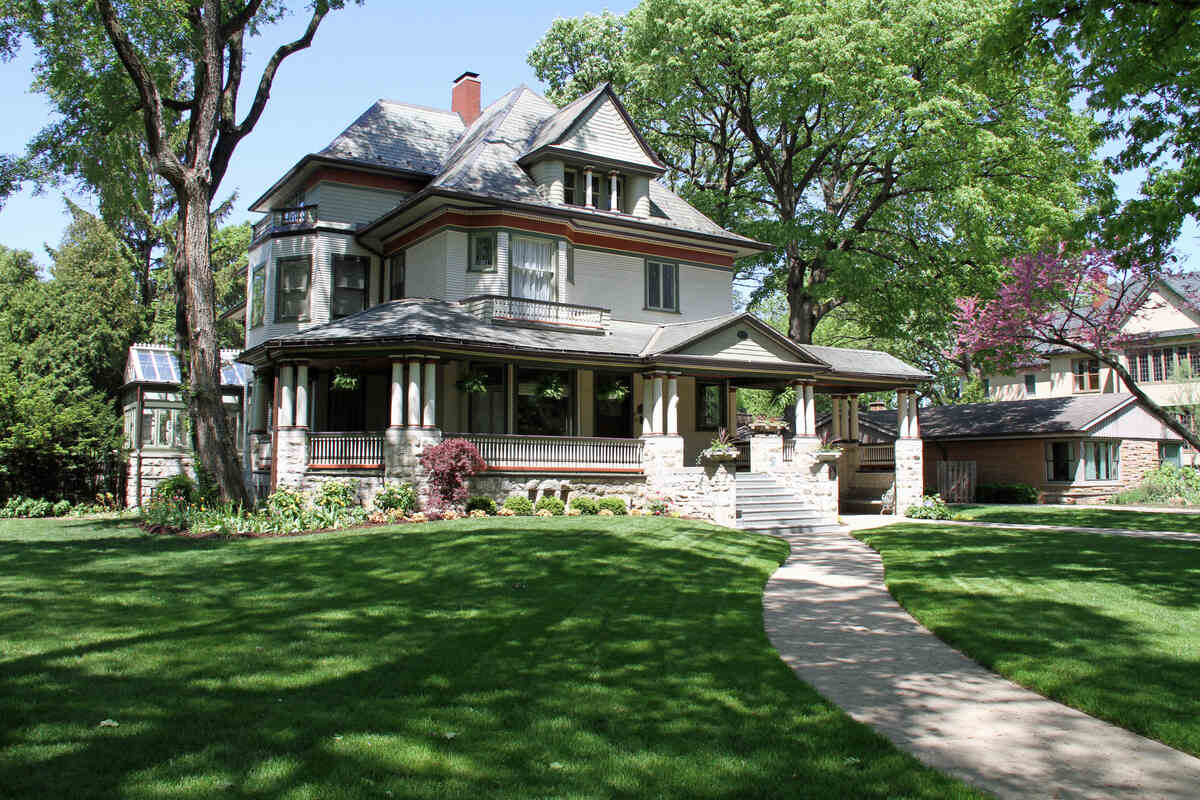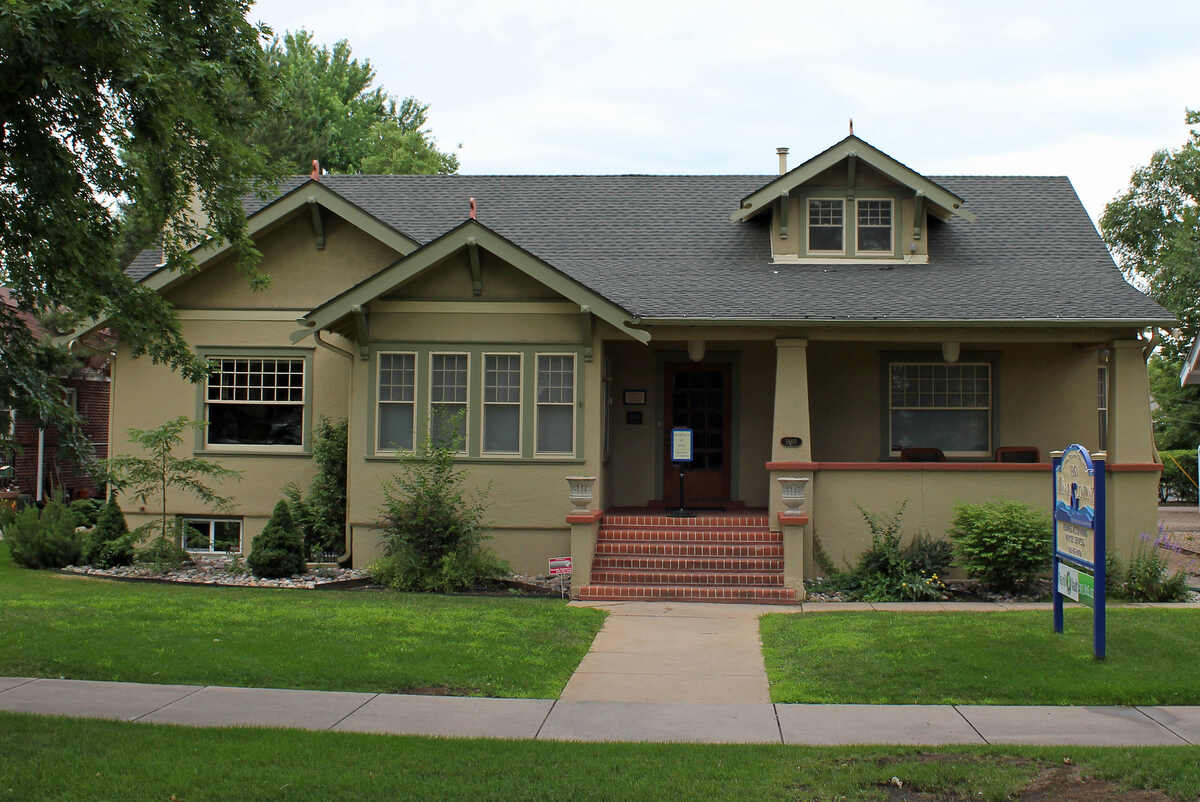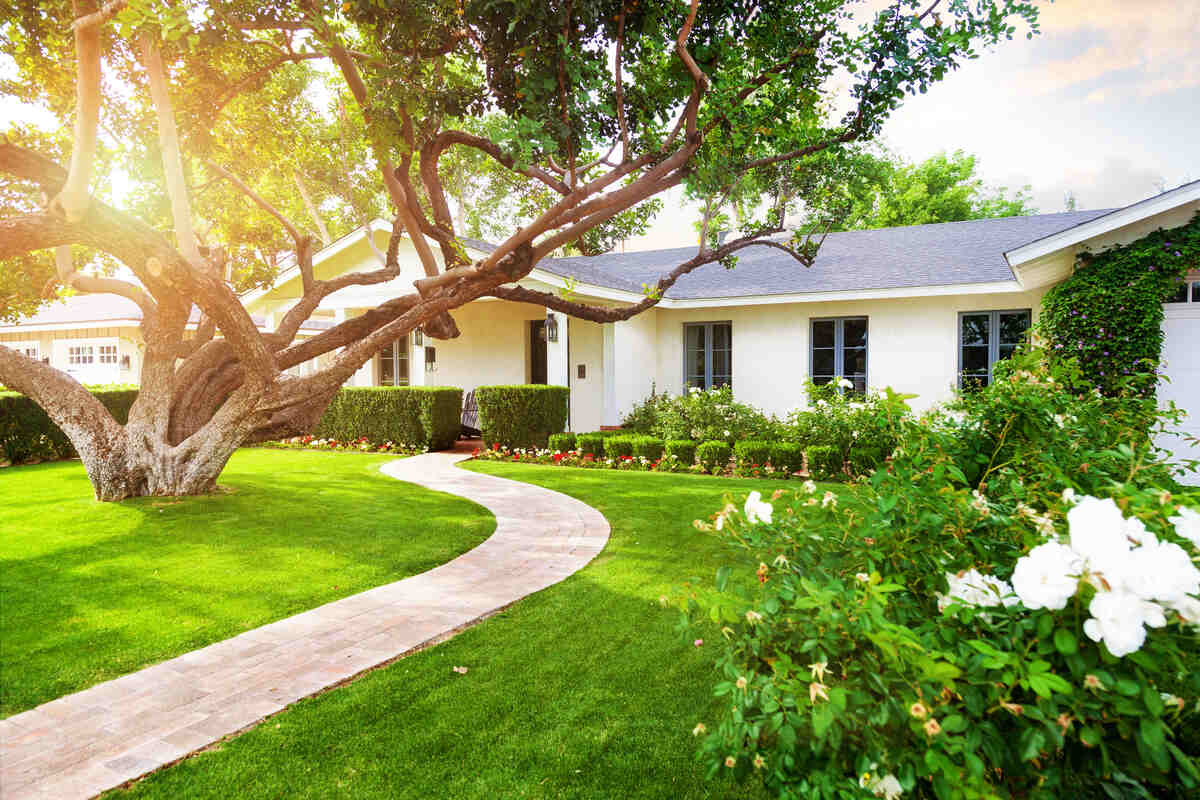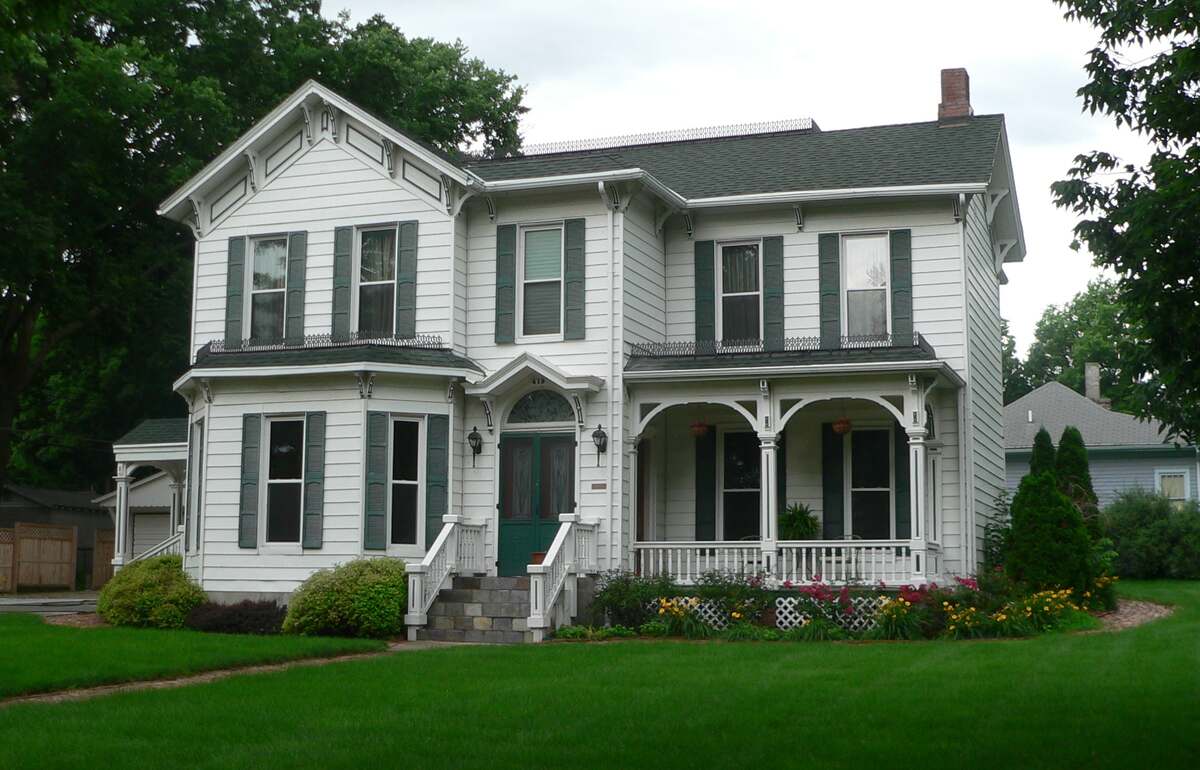
“Beautiful Nebraska” might have once been considered part of the Great American Desert, but that doesn’t mean your lawn should be hostile to vegetation. The Cornhusker State — a proven agricultural powerhouse — can house a lush, healthy green turf. Make it happen with our guide to the best grass seed for Nebraska.
As in any state, Nebraska has its own climatic challenges. Much of the state experiences an extreme continental climate with warm summers and cold winters. The western side is semi-arid with about 15 inches of rainfall per year, while the eastern side of Nebraska receives over double that amount.
With these challenges in mind, our list features both warm-season and cool-season grasses so you can make the best choice depending on the climate in your area of the state.
If you’re too busy to delve into each grass type in detail, check out our quick guide on how to choose the best grass type in Nebraska.
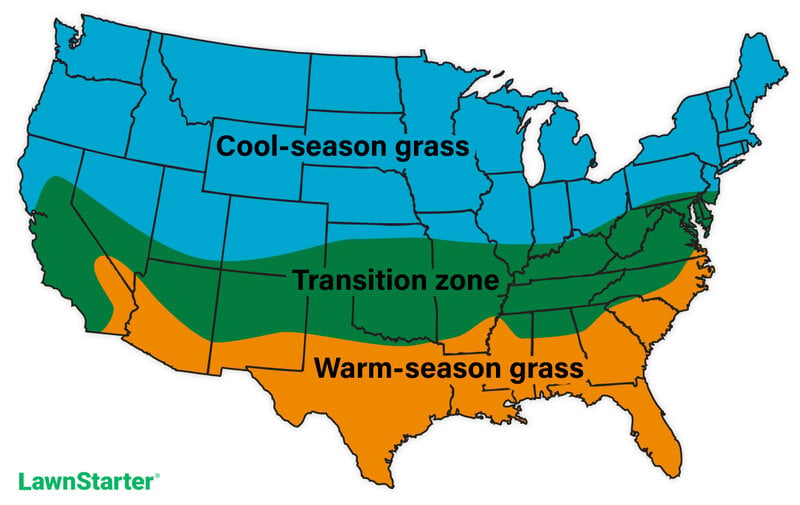
Kentucky Bluegrass

Photo Credit: Shutterstock
Considered to be the best adapted grass throughout Nebraska (except for the eastern side of the state), Kentucky bluegrass produces an attractive, medium-textured lawn. It’s often praised for its rich green color, and is a dense-growing cool-season grass introduced by Europeans to American soil.
Kentucky bluegrass (KBG) also is the most tolerant during the winter season out of all the cool-season grasses. While it thrives receiving 1 inch of water through rainfall or irrigation per week, KBG can also survive unirrigated conditions.
Keep in mind, though, that Kentucky blugrasses are prone to diseases that are difficult to control like necrotic patch and summer patch and can also be damaged by common pests in Nebraska like white grubs. Kentucky bluegrass also prefers a full sun, but newer varieties have developed a bit of shade tolerance.
Classification: Cool-season grass
Spreads by: Rhizomes
Shade tolerance: Low
Drought tolerance: Moderate
Foot traffic tolerance: Moderate
Maintenance needs: Moderate mowing frequency and high fertilization needs.
Mowing height: Set mowing height at around 3 inches or higher.
Potential for disease: Moderate to high; prone to several diseases, such as dollar spot, leaf spot, necrotic ring spot, summer patch, and stripe smut.
Soil pH: 6-7.5
Soil type: Performs best in well-drained, heavy soils with high fertility.
Other notes: Kentucky bluegrass is the slowest to germinate out of all the cool-season grasses, taking around 14-21 days. Because of this, perennial ryegrasses are often mixed with KBG to speed up grass establishment.
Grass Seed Options:
– Jonathan Green (11970) Blue Panther Kentucky Bluegrass Grass Seed (3 lbs.)
– SeedRanch Midnight Kentucky Bluegrass Seed (5 lbs.)
Tall Fescue

Aaron J. Patton, Ph.D. / Turfgrass Extension Specialist at Purdue University
A versatile grass type, tall fescues perform well in a wide array of soil textures, fertility, and pH. It’s also not affected by necrotic ring spots and summer patches and is rarely damaged by white grubs — unlike Kentucky bluegrass. It’s also the best choice for lawns situated in eastern Nebraska with relatively high rainfall and summer humidity.
According to the University of Nebraska–Lincoln, tall fescue develops a deep root system, which provides “a means of persisting during periods of poor growth conditions.” This root system pulls essential moisture and nutrients during low management conditions. However, turf quality suffers over time if it remains unfertilized.
Its root system enables tall fescue to stay green longer during drought compared to other cool-season grasses. However, this grass type is susceptible to illnesses like brown patch that can cause thinning. Tall fescue has a relatively poor winter tolerance, and performs best in central, but particularly in eastern, Nebraska.
Classification: Cool-season grass
Spreads by: Produces short rhizomes but has a bunch-type growth habit
Shade tolerance: Moderate
Drought tolerance: Moderate to High
Foot traffic tolerance: Moderate
Maintenance needs: Frequent mowing. Does not produce significant thatch.
Mowing height: Set mowing height to 3.5 inches.
Potential for disease: Tolerant of most diseases when properly maintained.
Soil pH: 5.5-6.5
Soil type: Adapted to a wide range of soil conditions, but prefers fertile clay soils with good drainage.
Other notes: Stress and wear tolerance increase once tall fescue has been established for more than one year. Even then, however, its cold tolerance won’t reach that of a KBG lawn.
Grass Seed Options:
– Triple-Play Tall Fescue Grass Seed Blend (5000 sq ft)
– Eretz Kentucky 31 K31 Tall Fescue Grass Seed (choose your size)
– Pennington The Rebels Tall Fescue Grass Seed Mix (7 lb.)
Buffalograss
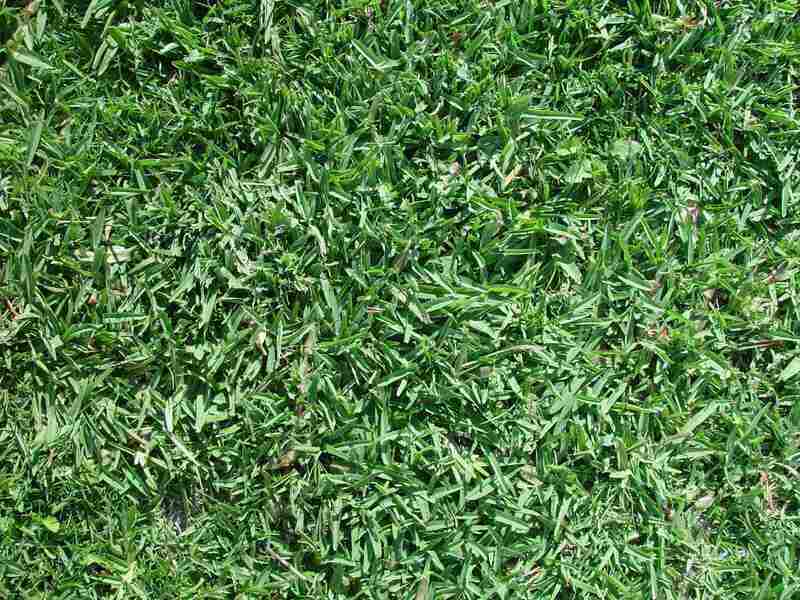
Photo Credit: Titus Tscharntke / Pixnio / CC0
Buffalograsses have the best cold tolerance out of all warm-season turfgrasses and are the only native grass widely adapted for home lawns. To survive the cold temperatures, they utilize a winter dormancy response.
This native grass has fantastic tolerance to heat and drought and grows well in alkaline and finely textured soils. It doesn’t do as well, though, in sandy soils. Buffalograss performs well as a low maintenance turf since it requires less fertilizer and mowing than other turfgrasses in Nebraska and little to no irrigation once it’s established.
Buffalograss isn’t vulnerable to diseases or white grubs but may be affected by chinch bugs. Unlike cool-season grasses, it’s imperative to seed this warm-season grass during spring. It also needs a lot of fertilization, irrigation, and weed control during the first summer to help it establish. After that, it becomes very low maintenance.
Classification: Warm-season grass
Spreads by: Stolons
Shade tolerance: Low
Drought tolerance: High
Foot traffic tolerance: Low
Maintenance needs: Low fertilizer and mowing needs. Requires weed control.
Mowing height: It’s preferred to set the mowing height to 3 inches.
Potential for disease: Good tolerance against diseases and insects
Soil pH: 6.5-7.5
Soil type: Native clay soils, not sandy soils
Other notes: Situations like the early onset of winter dormancy and a late spring green up make buffalograss prone to infiltration by weed species in Nebraska and cool-season grasses. Buffalograss remains green from around June through October.
Grass Seed Options:
– Everwilde Farms Buffalograss Seeds (1 lb. of seeds)
– Buffalograss seed (primed) (5-lb. bag)
Honorable Mention: Perennial Ryegrass
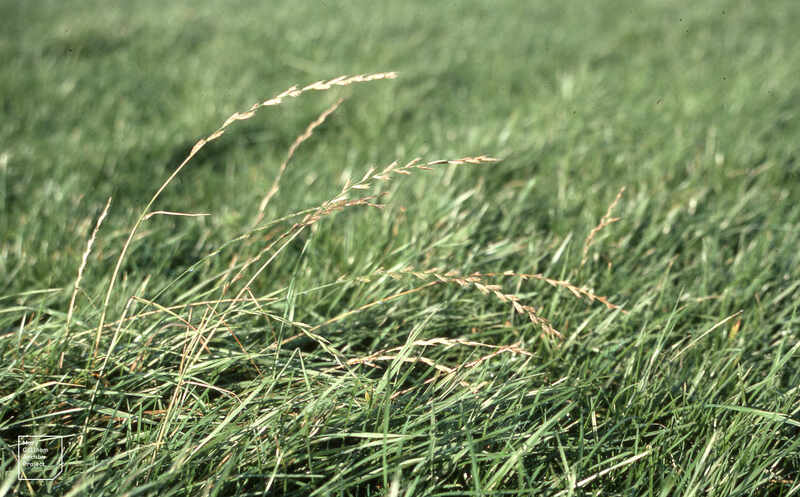
Photo Credit: Dr Mary Gillham Archive Project / Flickr / CC BY 2.0
Unlike the previous cool-season grass types, perennial ryegrass doesn’t persist in Nebraska lawns. It’s usually mixed with other types of grass in Nebraska such as Kentucky bluegrass since it germinates within one week, providing erosion control and quick cover while the slower-germinating KBG grows in.
Perennial ryegrass should be kept at 10-15% by weight of the original seed mix on lawns. This provides quick coverage but will be outcompeted by the permanent lawn as it grows. Another reason perennial ryegrass isn’t a good permanent turf: It is susceptible to a multitude of diseases, white grubs, and winterkill.
Classification: Cool-season grass
Spreads by: Has a bunch-type growth habit
Shade tolerance: Low
Drought tolerance: Low
Foot traffic tolerance: High
Maintenance needs: Moderate mowing and fertilization requirements. Thatch is not significant.
Mowing height: Set mowing height to 1.5 to 2.5 inches
Potential for disease: High. Common diseases include gray leaf spot, red thread, and leaf spot/melting-out.
Soil pH: Can grow in soils with a pH between 5 and 8, but prefers between 6 and 7.
Soil type: Prefers good drainage and fertility, but can tolerate some poor drainage.
Other notes: Unlike other grass types, perennial ryegrasses germinate pretty quickly at around five to seven days. This is one of the reasons why it’s used for quick ground cover for other cool-season grass types that germinate a little bit slower.
Grass Seed Options:
– Outsidepride Perennial Ryegrass Seed (5 lbs.)
– Eretz ProTurf Perennial Ryegrass Fine Lawn Seed (choose your size)
Honorable Mention: Zoysiagrass
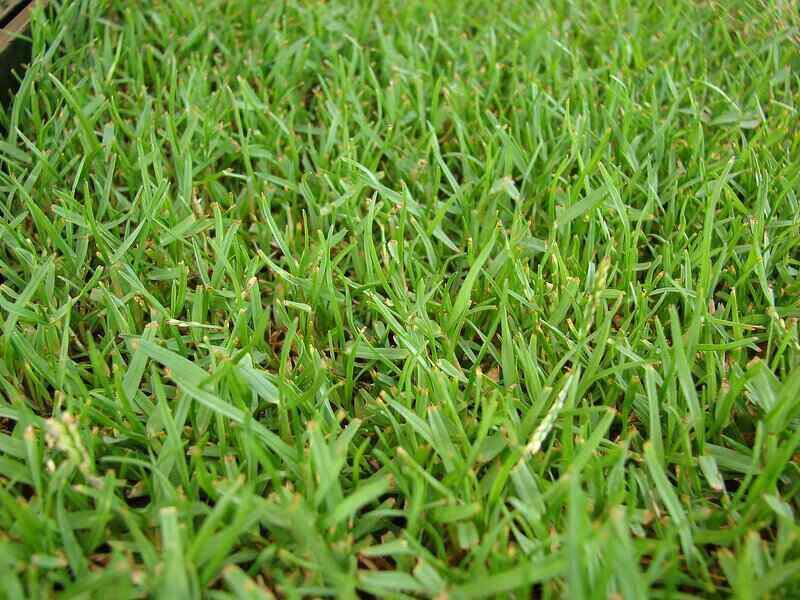
Photo Credit: Forest & Kim Starr / Wikimedia Commons / CC BY 3.0 US
Zoysiagrass, another warm-season species, is established on occasion in the southernmost areas of Nebraska. The main advantages of this grass are that it uses less water and fertilizer than cool-season grasses and grows best in the warm summer months when cool-season grasses struggle.
Zoysiagrass can form a dense sod due to its horizontal underground stems called rhizomes and above-ground stems called stolons. This dense growth enables it to hold up well to heavy foot traffic, which is great for summer outdoor activities.
The downsides of this grass are that in cooler climates like Nebraska it will be slow to green up in spring (around May) and will go dormant relatively early in the fall. Homeowners are likely to notice some winterkill each year and will then have problems with cool-season grasses encroaching where the turf has died.
Classification: Warm-season grass
Spreads by: Stolons and rhizomes
Shade tolerance: Moderate
Drought tolerance: Moderate to High
Foot traffic tolerance: High, but recovers slowly from damage
Maintenance needs: Low nitrogen fertilization requirements, although, it’s prone to thatch build-up.
Mowing height: Set mowing height between 1 and 2 inches.
Potential for disease: Good disease tolerance overall
Soil pH: 6-6.5
Soil type: Well-draining, some cultivars are more tolerant of a wide range of soils than others.
Other notes: Although Zoysia is planted in some southern Nebraska lawns, it’s usually seen as a weed and can be hard to eliminate (should you want to establish a new turf) once it’s established.
Grass Plug and Seed Options:
– Zoysia Plugs (50 Large Grass Plugs)
– Zoysia Plugs (50 Full & Lush Grass Plugs)
– Zoysia Plugs (100 Plugs)
– Zenith Zoysia Grass Seeds (1/8 lb. of seeds)
How to Choose the Best Grass Type in Nebraska
People seed their lawns with grasses for a variety of reasons: aesthetics, durability for heavy use, ground cover against erosion control, or reduced inputs for a low-maintenance lawn. A grass species normally can’t provide all of these features, so picking the right one is important.
To make things easier for our wonderful readers in Nebraska, we’ve listed some factors you should consider before your impending seed purchase.
High-Maintenance vs Low-Maintenance Grasses
Some grass types require more mowing, irrigation, and financial resources than others to maintain. Plan ahead using this list to make sure your lawn thrives no matter how busy you are.
High-maintenance: Kentucky bluegrass
Moderate-maintenance: Zoysiagrass, perennial ryegrass, tall fescue
Low-maintenance: Buffalograss
Drought Tolerance
While Nebraska’s climate is typically chilly with an annual average temperature of 50 degrees, it has an average high of around 87 degrees during the month of July. Here’s how the above-mentioned grasses fare during warmer times of the year.
High drought tolerance: Buffalograss
Low drought tolerance: Perennial ryegrass
Moderate drought tolerance: Zoysiagrass, Kentucky bluegrass, tall fescue
Shade Tolerance
Grasses do like their fair share of the sun. But for many lawns, giving them a full dose of those sweet, sweet rays isn’t always feasible — especially if you have trees and other plants present. Luckily, there are grass varieties that can tolerate the shade better than others.
Moderate shade tolerance: Zoysiagrass, tall fescue
Low shade tolerance: Buffalograss, Kentucky bluegrass, perennial ryegrass
Recommended Mixes Per Nebraska Region
Some grass types will thrive better in certain parts of the state due to the differences in the climate and conditions. Here are some of the University of Nebraska–Lincoln’s recommendations for the best types and grass seed blends per region:
| Eastern Nebraska | Central to Western Nebraska |
| 100% tall fescue | 100% Kentucky bluegrass |
| 90% tall fescue + 10% Kentucky bluegrass | 100% buffalograss |
| 100% Kentucky bluegrass | – |
| 100% buffalograss | – |
Bring in the Professionals
Looking for a Nebraska lawn care professional near you? We have trusted lawn care pros to choose from in Omaha, Bellevue, and across the state ready to lend a hand in your Great Plains lawn.
Additional source:
University of Nebraska-Lincoln
Main Image Credit: Ammodramus / Wikimedia Commons / CC0 1.0
LawnStarter participates in the Amazon Services LLC Associates Program, an affiliate advertising program. LawnStarter may earn revenue from products promoted in this article.

